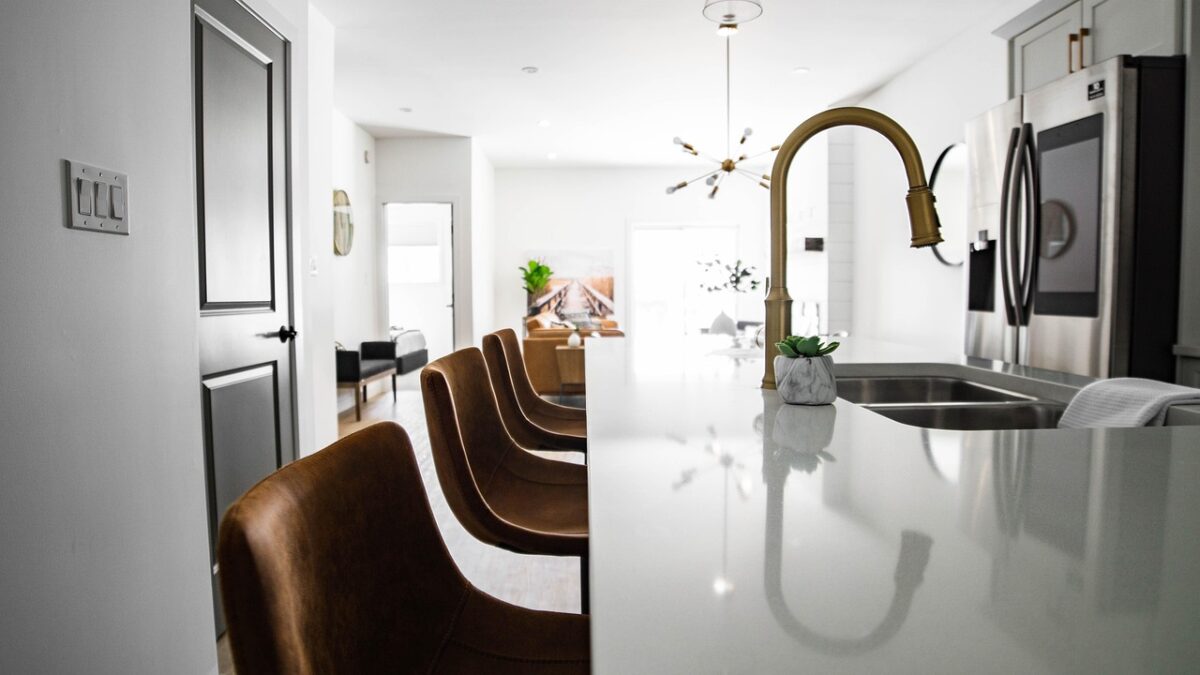Kitchen islands have become essential features in contemporary homes, serving as multifunctional hubs for cooking, dining, and socializing. Whether you are a homeowner, a renovator, or an interior designer, this comprehensive guide will inspire you with the best kitchen island ideas while providing practical insights on design, installation, and budgeting. Use this list to find the perfect kitchen island that fits your space and style.
Integrating a kitchen island into your home can enhance both functionality and aesthetic appeal. Here are some compelling reasons to consider:
- Increased Workspace: Kitchen islands provide additional surface area for food preparation, cooking, and baking.
- Social Hub: They create a casual dining space, encouraging family and friends to gather and interact while meals are being prepared.
- Storage Solutions: Islands can incorporate cabinets, drawers, and shelves, offering ample storage for kitchen essentials.
- Design Statement: A well-designed island can serve as a focal point, adding character to your kitchen.
How to Choose the Right Kitchen Island for Your Space
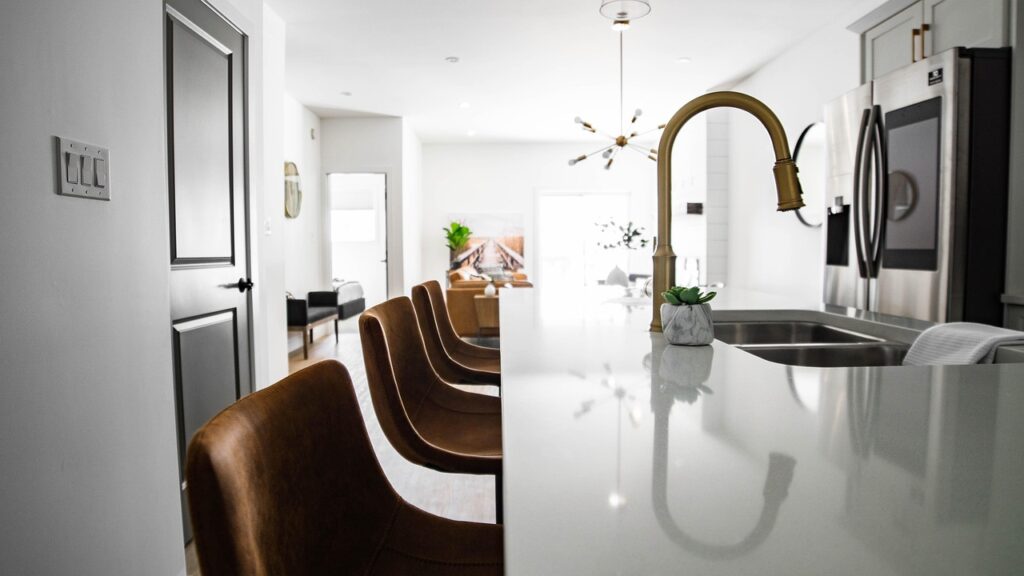
Selecting the perfect kitchen island involves considering several factors to ensure it complements your kitchen layout and meets your needs:
- Size: Measure your kitchen space to determine how large your island can be without obstructing traffic flow.
- Style: Choose a design that aligns with your kitchen’s overall aesthetic, whether modern, farmhouse, or traditional.
- Functionality: Decide what you want your island to do—cooking, dining, or serving as a prep station—and design accordingly.
- Materials: Consider durability and maintenance when selecting materials for your island’s surface and structure.
Top 20 Best Kitchen Island Ideas
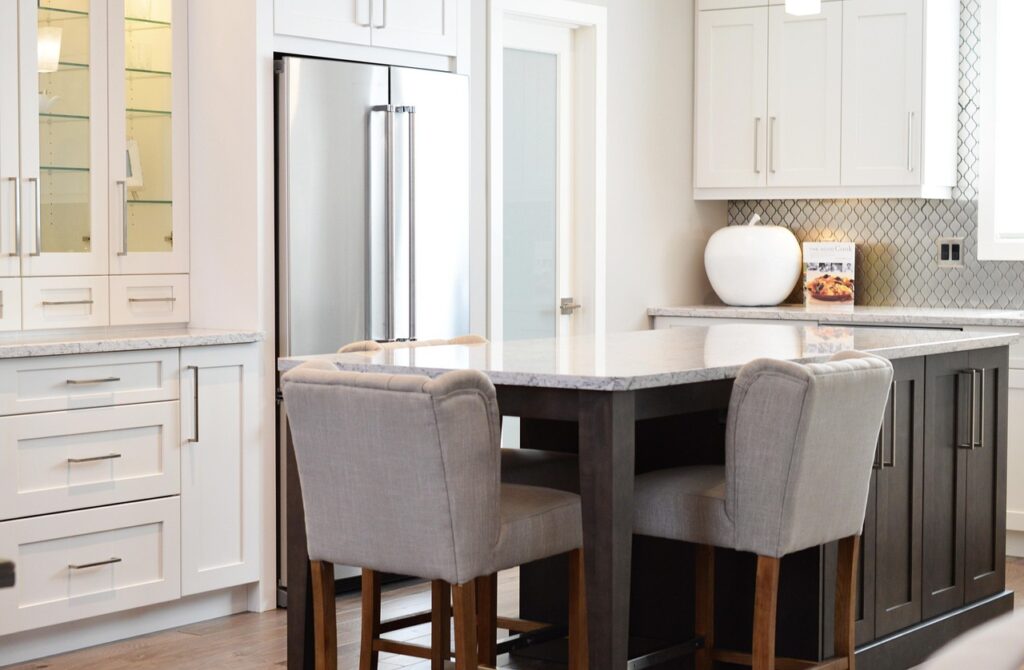
1. Minimalist Modern Island
A sleek, minimalist island with clean lines and a solid surface can elevate a contemporary kitchen.
- Pros: Timeless design, easy to clean, versatile.
- Cons: Limited storage options.
2. Rustic Farmhouse Island
Featuring reclaimed wood and a distressed finish, this island adds warmth and charm to any kitchen.
- Pros: Unique character, great for open-concept spaces.
- Cons: Requires regular maintenance to prevent wear.
3. Multi-Level Island
A multi-level island provides distinct areas for cooking and dining, enhancing functionality.
- Pros: Separate spaces for activities, visually interesting.
- Cons: Can be more complex to design and build.
4. U-Shaped Island
This design offers ample workspace and storage, ideal for larger kitchens.
- Pros: Efficient workflow, lots of storage.
- Cons: Requires more space.
5. Portable Kitchen Island
A mobile island on wheels can be moved as needed, providing flexibility in smaller kitchens.
- Pros: Versatile, easy to store.
- Cons: Less stability when compared to fixed islands.
6. Breakfast Bar Island
An island with overhangs for bar stools creates an inviting breakfast nook.
- Pros: Casual dining option, great for small kitchens.
- Cons: Limited prep space.
7. Sink Integrated Island
Incorporating a sink into your island maximizes functionality, making it easier to clean up.
- Pros: Efficient workflow, keeps the main sink area clear.
- Cons: Requires plumbing considerations.
8. Cooking Station Island
An island designed specifically for cooking can include a cooktop, hood, and ample prep space.
- Pros: Centralizes cooking tasks, enhances workflow.
- Cons: Needs proper ventilation and safety measures.
9. Open Shelving Island
Open shelves on an island provide easy access to frequently used items while adding a decorative touch.
- Pros: Showcases beautiful dishware, encourages organization.
- Cons: Requires regular cleaning to avoid dust accumulation.
10. L-Shaped Island
This design can create a natural divide between the kitchen and dining area, ideal for open floor plans.
- Pros: Defines spaces, offers great prep area.
- Cons: May limit movement in smaller kitchens.
11. Colorful Statement Island
A bold-colored island can serve as a focal point, adding personality to your kitchen.
- Pros: Eye-catching, customizable to your taste.
- Cons: May clash with other design elements.
12. Quartz Countertop Island
Durable and low-maintenance, quartz offers a sleek look while providing exceptional performance.
- Pros: Resistant to stains and scratches, available in various colors.
- Cons: Can be more expensive than other materials.
13. Mixed Material Island
Combining different materials—like wood and metal—can create a unique and stylish island.
- Pros: Adds visual interest, customizable.
- Cons: Requires careful coordination of materials.
14. Eco-Friendly Island
Using sustainable materials like bamboo or recycled wood can contribute to an eco-conscious kitchen.
- Pros: Environmentally friendly, unique aesthetics.
- Cons: May require specialized care.
15. Built-In Wine Rack Island
An island with a built-in wine rack can enhance your kitchen’s entertainment capabilities.
- Pros: Convenient storage for wine, adds sophistication.
- Cons: Limited to wine storage; other beverages may need separate storage.
16. Industrial Style Island
Metal finishes and raw materials create a rugged, industrial look that’s become increasingly popular.
- Pros: Sturdy and durable, unique character.
- Cons: Can appear cold if not balanced with warm decor.
17. Custom Built-In Seating Island
Incorporating built-in seating allows for a cozy dining experience right in the kitchen.
- Pros: Maximizes space, encourages family gatherings.
- Cons: More expensive and time-consuming to build.
18. Floating Island
A floating island design creates a light and airy feel, perfect for modern kitchens.
- Pros: Unique visual appeal, maximizes floor space.
- Cons: Requires careful structural planning.
19. Smart Tech Island
Integrating smart technology, such as touchless faucets and built-in charging stations, can elevate your kitchen’s functionality.
- Pros: Convenient and efficient, enhances modern living.
- Cons: Higher upfront costs, may require technical expertise.
20. Vintage Repurposed Island
Using vintage furniture or cabinetry can create a charming, one-of-a-kind island.
- Pros: Unique character, sustainable.
- Cons: May require more maintenance and repairs.
Popular Kitchen Island Styles and Materials
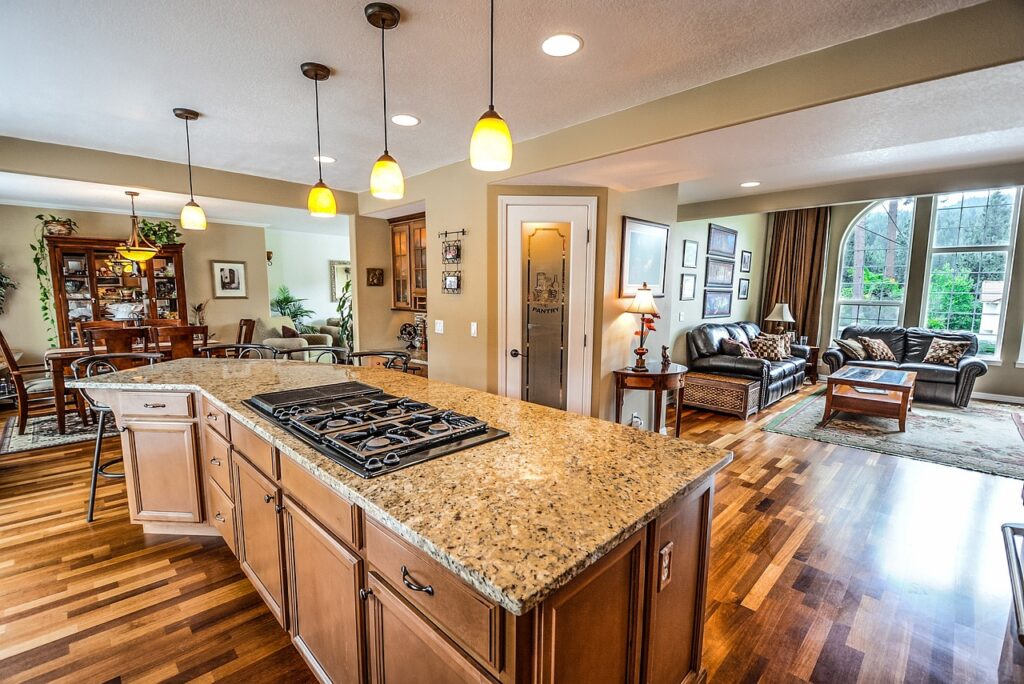
Contemporary Style
Characterized by clean lines and minimalistic features, contemporary kitchen islands often utilize materials like quartz and stainless steel.
Traditional Style
Traditional islands feature ornate details and rich wood finishes, often incorporating classic design elements.
Farmhouse Style
This style embraces rustic charm with natural wood and a cozy aesthetic, ideal for creating a warm kitchen environment.
Materials Overview
- Wood: Offers warmth and versatility but may require more upkeep.
- Granite: Durable and stylish, though heavier and may require professional installation.
- Marble: Elegant and timeless but can be prone to scratches and stains.
- Metal: Adds an industrial flair, easy to clean, but may show fingerprints.
Essential Tools and Materials for Building or Upgrading a Kitchen Island
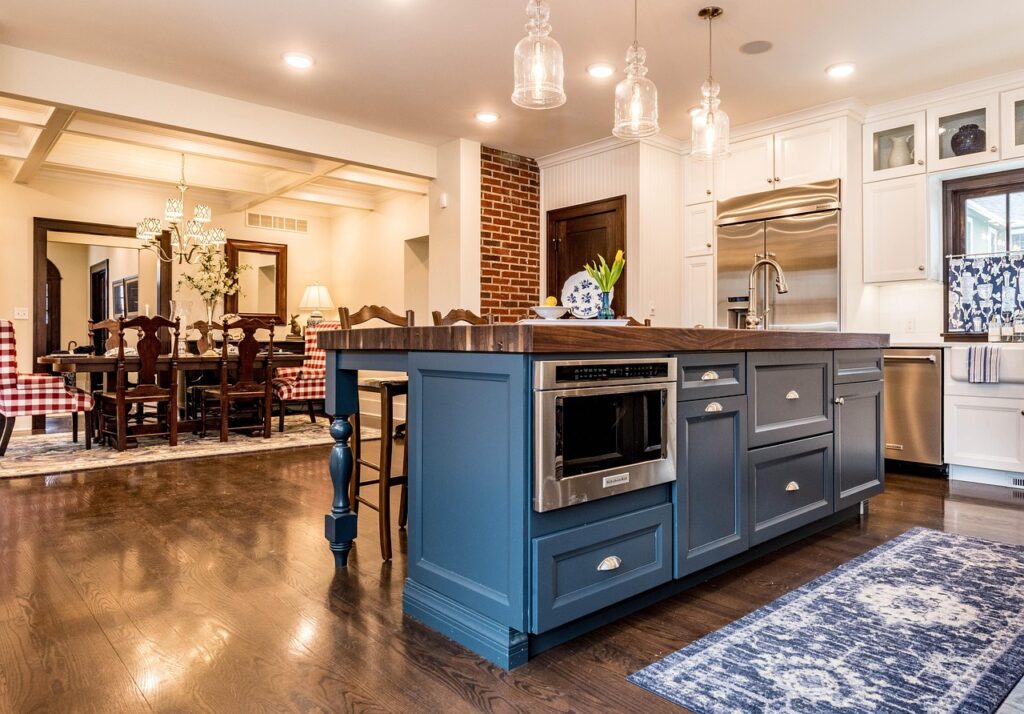
Whether you are constructing a new island or upgrading an existing one, having the right tools and materials is crucial:
- Tools:
- Drill
- Saw (circular or miter)
- Screwdriver
- Measuring tape
- Level
- Materials:
- Wood or plywood for the frame
- Countertop material (granite, quartz, wood)
- Cabinet hardware
- Paint or stain
- Finishing materials (sealants, varnishes)
Step-by-Step Guide: Installing or Updating a Kitchen Island
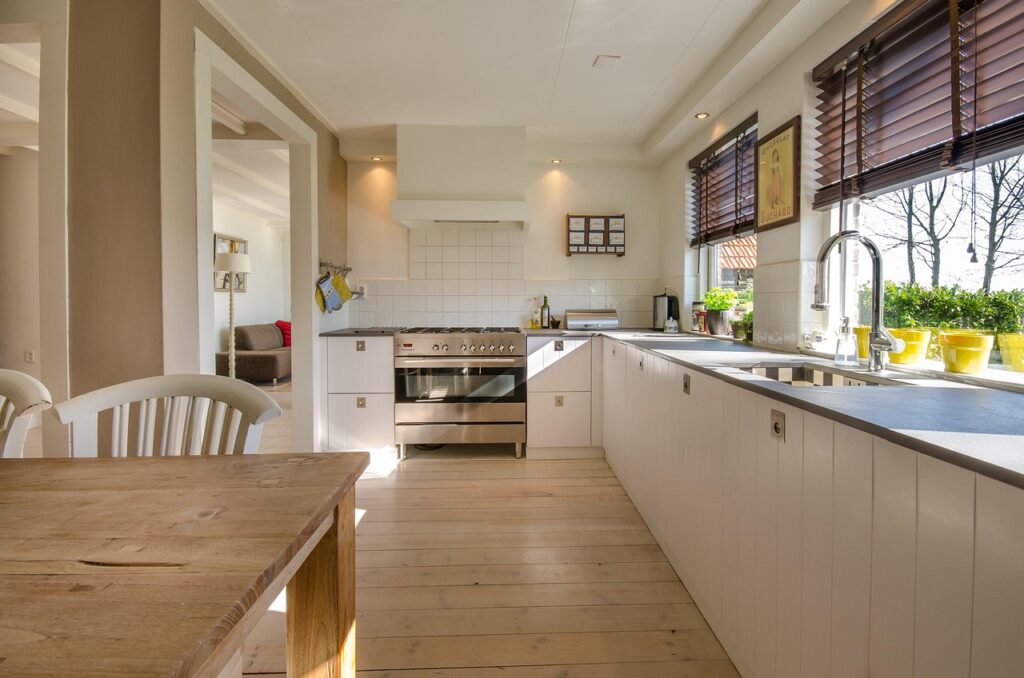
Preparation
Begin by measuring your space and planning the design. Ensure your island’s size fits comfortably within the kitchen layout.
Building the Frame
Construct the frame using plywood, ensuring it is sturdy and level. Secure it to the floor if necessary.
Adding Countertop
Choose your countertop material and cut it to size. Secure it to the frame, ensuring it is level and properly aligned.
Installing Storage Solutions
Add shelves, cabinets, or drawers according to your design, ensuring they are accessible and functional.
Finishing Touches
Sand, paint, or stain the island to match your kitchen decor. Install any hardware, such as handles or knobs.
Budgeting Tips and Cost Breakdown
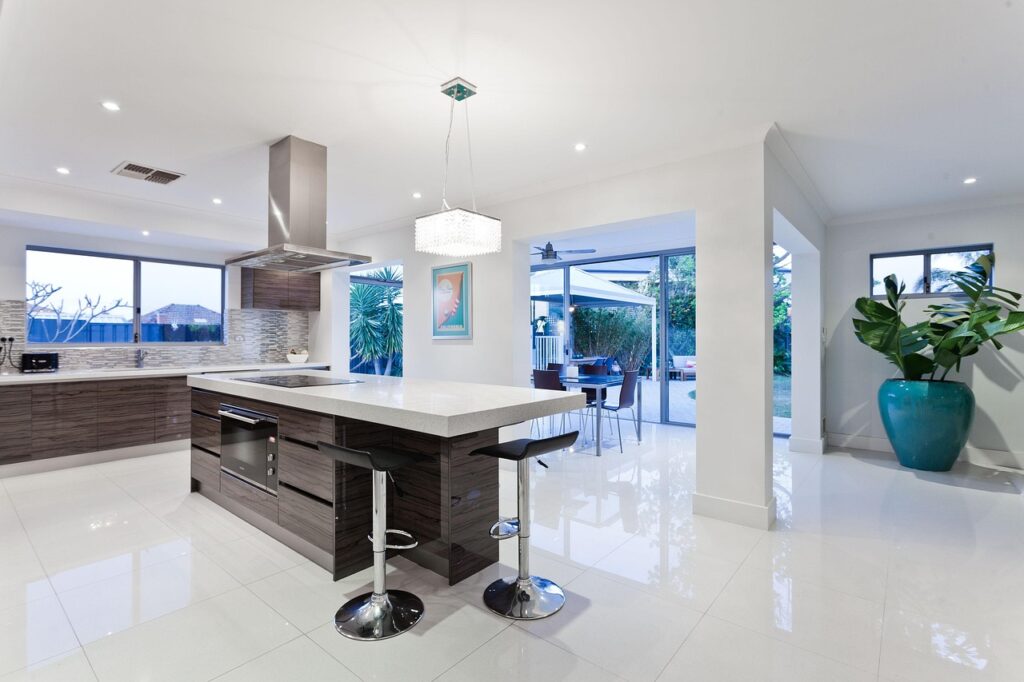
Understanding your budget is key to a successful kitchen island project. Here’s a breakdown of potential costs:
- Materials: $500 – $2,500 (depending on size and materials)
- Labor: $300 – $1,200 (if hiring professionals)
- Tools: $100 – $500 (if purchasing new tools)
- Finishing: $50 – $300 (paint, stain, sealant)
Consider setting aside 10-20% of your budget for unexpected expenses.
Safety Notes and Troubleshooting Common Issues
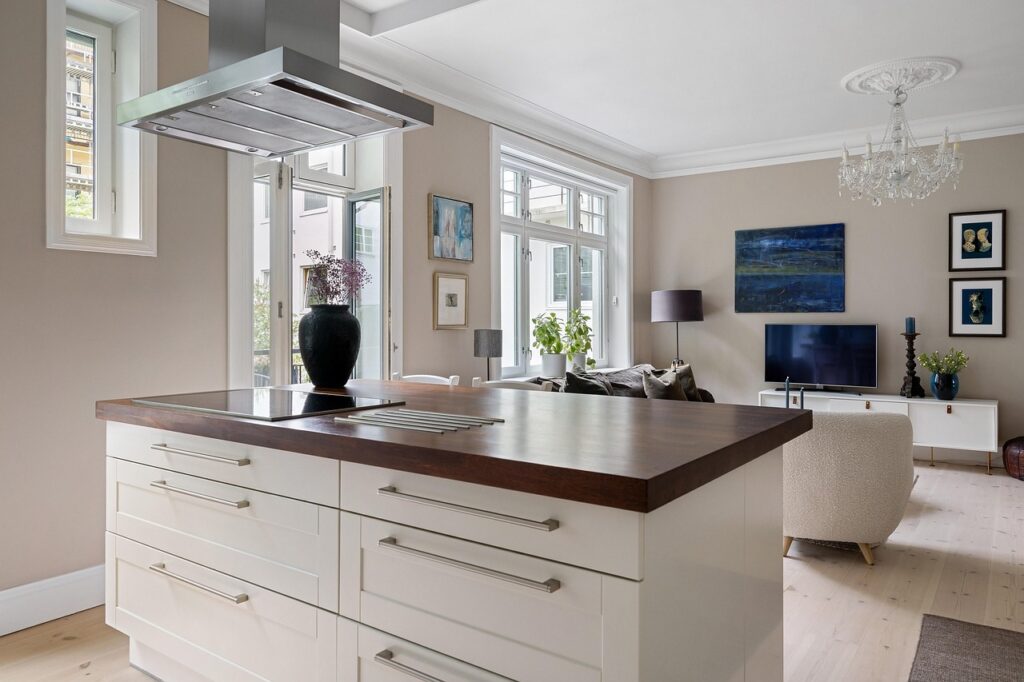
Safety Precautions
- Always wear safety gear when using power tools.
- Ensure proper ventilation while cutting and sanding materials.
- Secure heavy items to prevent tipping.
Troubleshooting Tips
- Uneven Surface: Check for levelness and adjust legs or supports as needed.
- Loose Hardware: Regularly check and tighten screws or bolts.
- Water Damage: Use sealants to protect wooden surfaces from moisture.
Making Your Kitchen Island Work for You
Your kitchen island can be more than just a functional element; it can be a stunning centerpiece that enhances your kitchen’s usability and style. By considering your space, needs, and aesthetic preferences, you can create an island that serves as a gathering point for family and friends while elevating your cooking experience. With the right planning and execution, your kitchen island can become the heart of your home.
